The Midland Counties Railway Act (1836) led to the building in 1840 of Leicester’s first mainline railway station, Leicester Campbell Street, on land behind London Road.
- Designed by Leicester architects Goddard, Paget and Goddard
- Terracotta panels on the exterior chart the history of Cook's business
- When opened it contained a travel agents, shipping office and foreign currency exchange
A travel pioneer
Thomas Cook was the pioneer of popular tourism and founder of the international travel company Thomas Cook and Son. This Grade II listed building in Gallowtree Gate was commissioned by his son, John Mason Cook, and opened in 1894 next to the company’s existing offices. It was both a memorial to Cook himself, who died two years earlier, and a more suitable base for the business, which had grown from modest beginnings to employ over 2,000 people worldwide. The architects were the local firm of Goddard, Paget and Goddard, and it was built by Hardington and Elliott of Leicester.
The building housed Cook’s Excursion, Tourist and Shipping Office, ‘handsomely furnished in teak’, along with the Foreign Banking and Exchange Department, which had ‘lately assumed greatly increased proportions’. It also held the parcels office of the Midland Railway. The building had a number of tenants, including the Leicester Medical Society and the Leicester and Leicestershire Society of Architects, both with their professional libraries.
The exterior was designed in Renaissance style with buff terracotta and glazed faience decoration. There were emblems of Europe, Asia, Africa and America on the rectangular columns, along with the names of major towns across the world in which Cook’s had established agencies – over 80 by that time. A central panel carried the inscription: ‘Erected A.D., 1894, by John M. Cook, to commemorate the origin of the Excursion System of the World by Thomas Cook’s special train from Leicester to Loughborough, July 5th, 1841’. Above the second floor windows is a frieze inscribed ‘1841 T. Cook and Son 1891’, marking the company’s 50th anniversary.
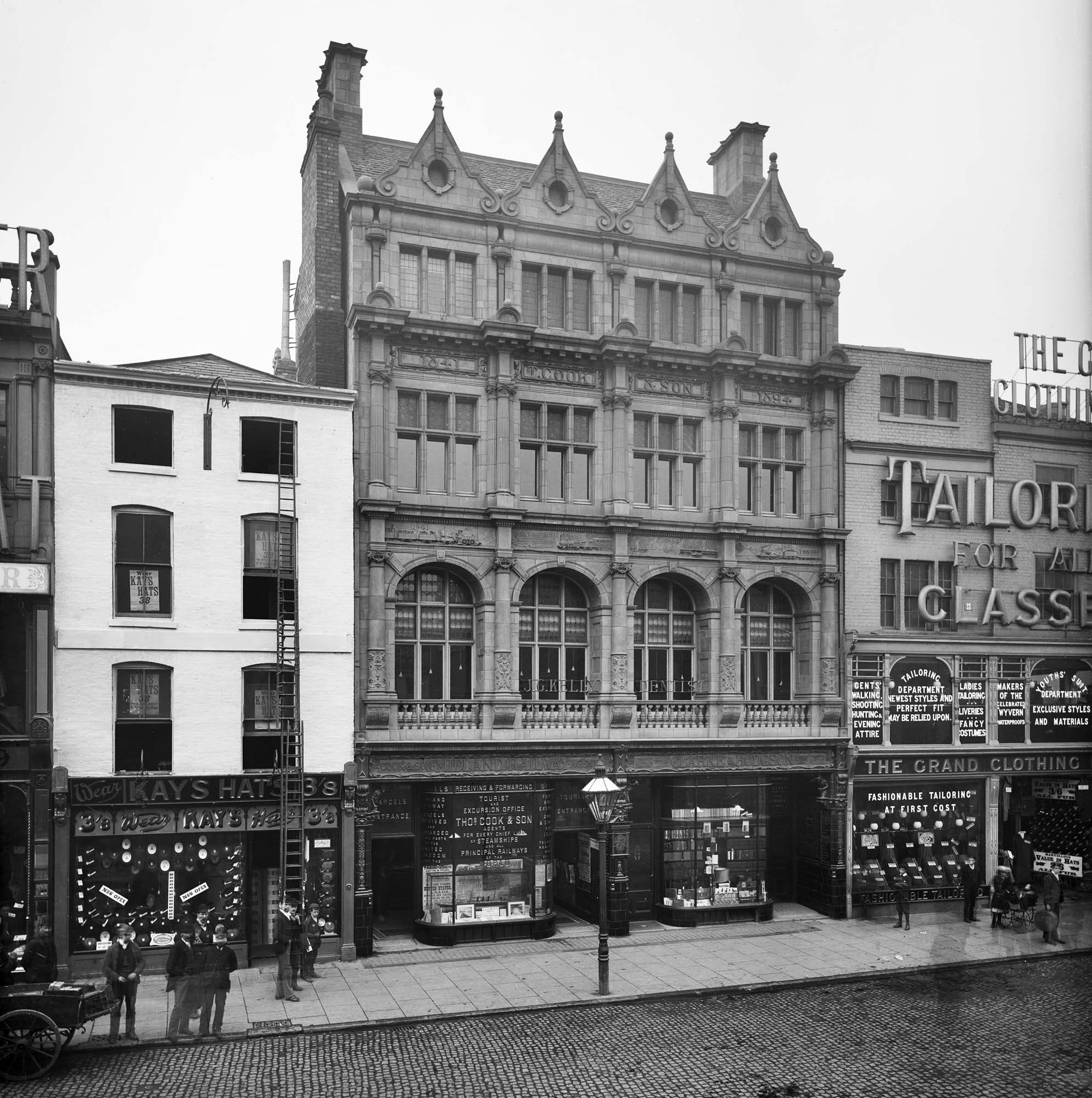
History in teracotta
The most striking features of the building are the four terracotta relief panels above the first floor windows, identifying aspects of the development of the business.
The first panel, dated 1841, represents Cook’s first excursion to Loughborough showing the small four-wheeled engine that pulled the open-tub third class passenger carriages of the time. Like many of Thomas Cook’s business and charitable activities, the inspiration for this journey came from his involvement in the Victorian Temperance movement and his lifelong belief that alcohol was the cause of much ‘poverty, crime, strife, and wretchedness’. The idea came to him at Kibworth, he recalled, while walking from Market Harborough to Leicester to attend a meeting: ‘a thought suddenly flashed upon me to the effect that it would be a capital thing if we could make railways subservient to the interests of temperance’.
Almost 500 people paid one shilling for a return ticket, ‘and at both Leicester and Loughborough there were from two to three thousand spectators assembled to witness their arrival and departure’.
The success of this venture inspired more Temperance excursions and others for the general public, among them visits to the Crystal Palace in Hyde Park, London for the Great Exhibition of 1851. This is shown in the background of the second panel. Cook conveyed more than 160,000 passengers to the Exhibition, this time in covered third class carriages which were a welcome improvement in passenger comfort.
The third panel, dated 1884, marks the role of the company during the Nile Expedition of that year, when its steamers were used to render ‘signal aid to the British Army then serving in Egypt’ in the relief of General Gordon’s forces in Khartoum. As the railway system expanded, Cook’s tours had already extended into other areas of Britain, Europe and further afield. These pioneering ventures inevitably encountered some problems, despite being conducted by Cook or his son in person. Due to a lack of restaurant facilities and lavatories on the train, for example, the 500 passengers on his first Scottish tour in the mid-1840s arrived at their first stop in Lancashire ‘starving and bursting’.
The final panel is dated 1891 and shows two major advances in railway technology: a modern ‘express’ engine of the Midland Railway, and the Forth Bridge, ‘typical of modern railway construction’.
Thomas Cook was buried in Welford Road Cemetery, and is also commemorated by a Blue Plaque on his former home, Thorncroft, on London Road. After the death of John Mason Cook the business was carried on by Thomas Cook’s three grandsons.
Gallery
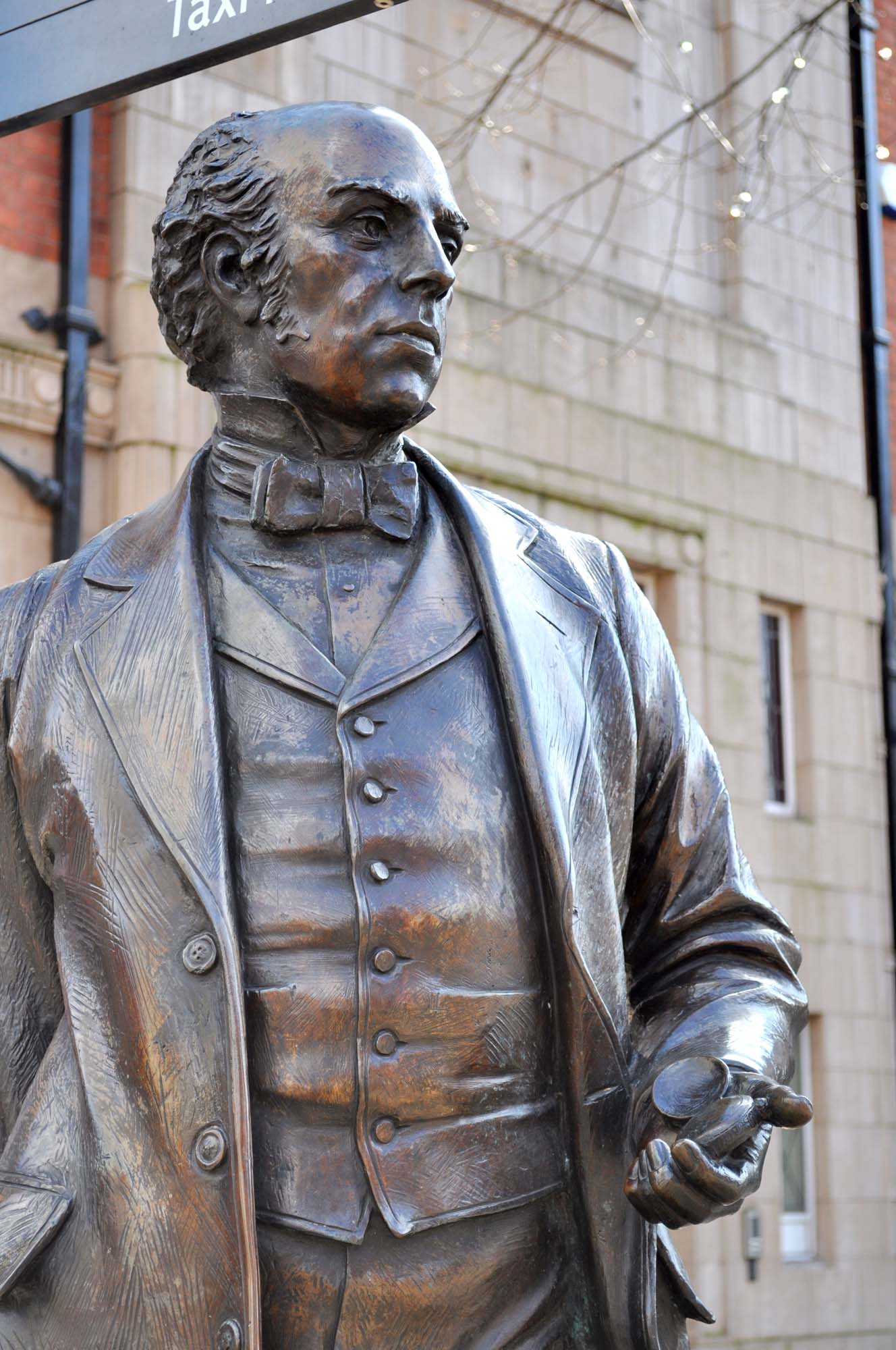
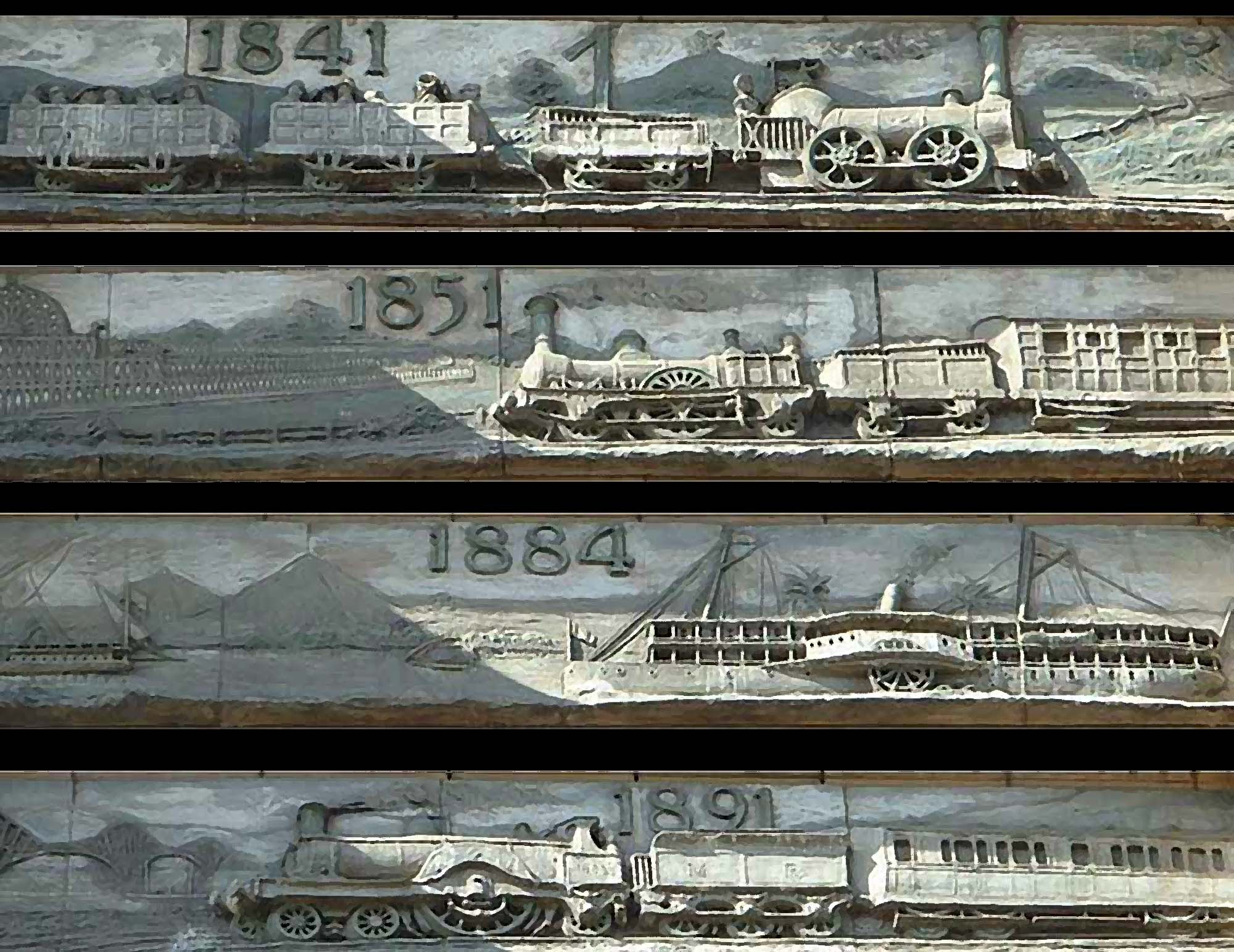
Colin Hyde
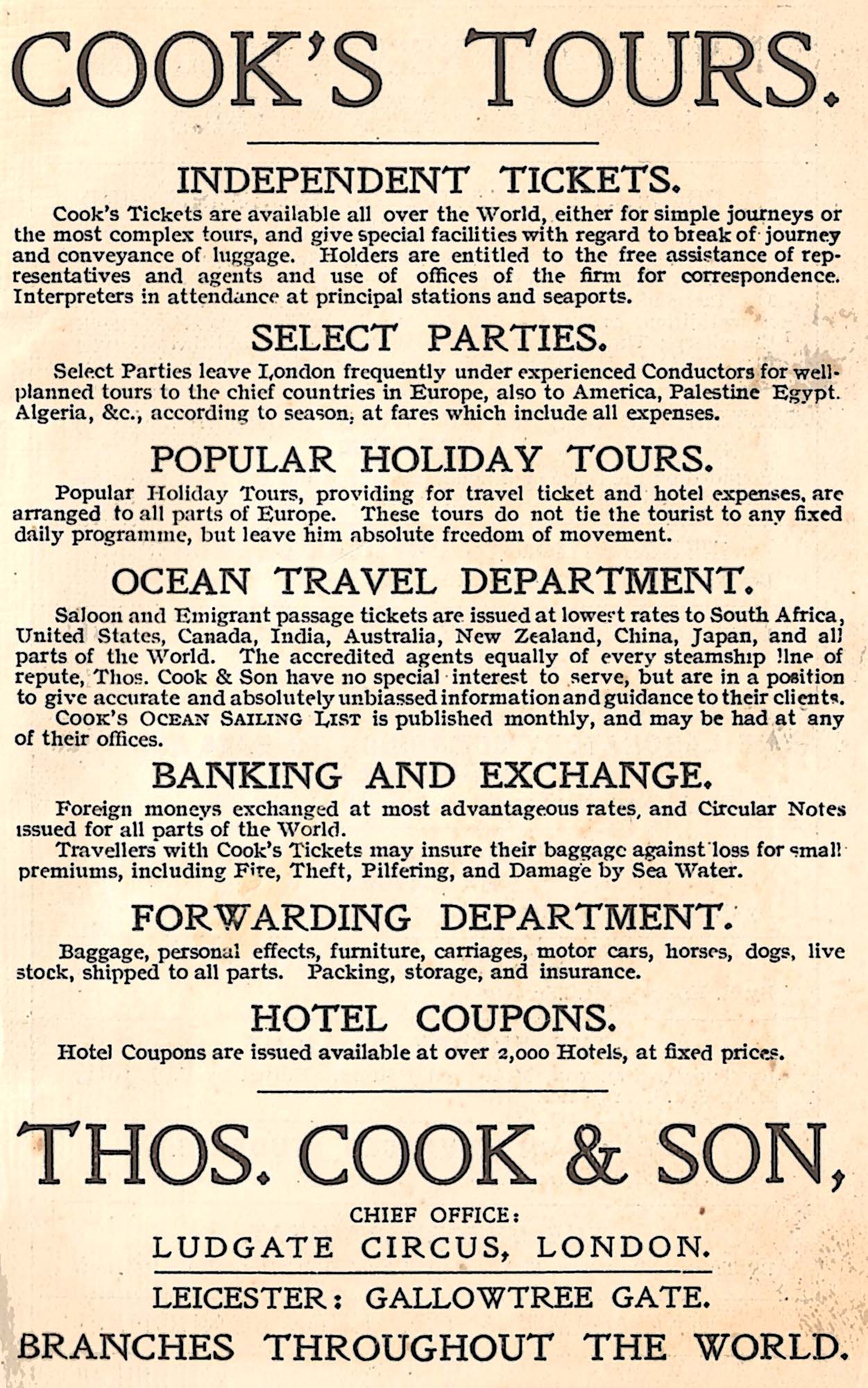
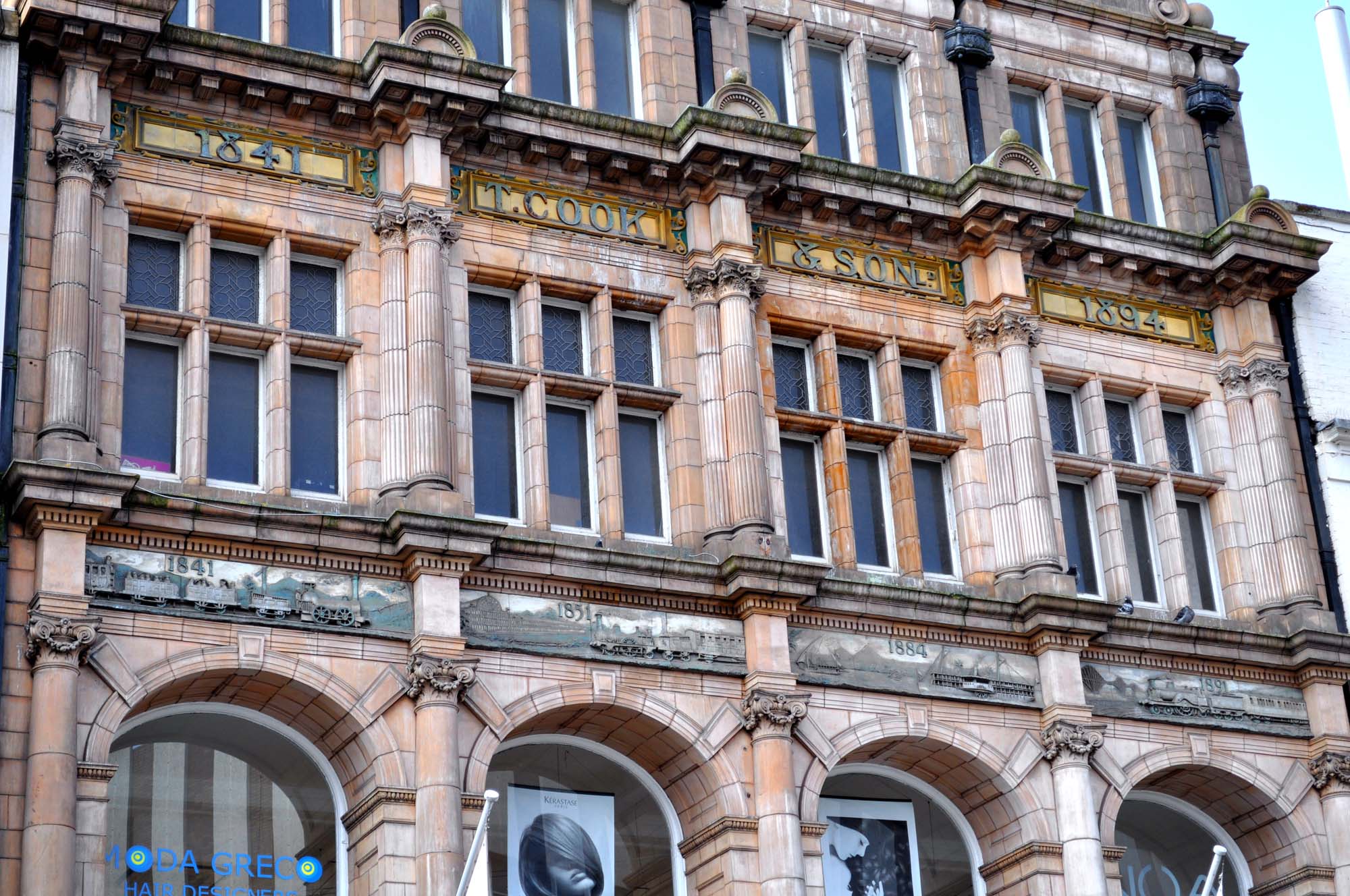

English Heritage
Thomas Cook's Leicester
Roman Leicester
(47- 500) A military fort was erected, attracting traders and a growing civilian community to Leicester (known as Ratae Corieltauvorum to the Romans). The town steadily grew throughout the reign of the Romans.
Medieval Leicester
(500 – 1500) The early years of this period was one of unrest with Saxon, Danes and Norman invaders having their influences over the town. Later, of course, came Richard III and the final battle of the Wars of the Roses was fought on Leicester’s doorstep.
-
The Castle Motte1068

-
Leicester Cathedral1086

-
St Mary de Castro1107

-
Leicester Abbey1138

-
Leicester Castle1150

-
Grey Friars1231

-
The Streets of Medieval Leicester1265

-
Leicester Market1298

-
Trinity Hospital and Chapel1330

-
Bow Bridgecirca 1350

-
Church of the Annunciation1353

-
John O’Gaunt’s Cellar1361

-
St John's Stone1381

-
Leicester Guildhall1390

-
The Magazine1400

-
The Blue Boar Inn1400

-
The High Cross1577

Tudor & Stuart Leicester
(1500 – 1700) The wool trade flourished in Leicester with one local, a former mayor named William Wigston, making his fortune. During the English Civil War a bloody battle was fought as the forces of King Charles I laid siege to the town.
Georgian Leicester
(1700 – 1837) The knitting industry had really stared to take hold and Leicester was fast becoming the main centre of hosiery manufacture in Britain. This new prosperity was reflected throughout the town with broader, paved streets lined with elegant brick buildings and genteel residences.
-
Great Meeting Unitarian Chapel1708

-
The Globe1720

-
17 Friar Lane1759

-
Black Annis and Dane Hills1764

-
Leicester Royal Infirmary1771

-
New Walk1785

-
Freemasons’ Hall1790

-
Gaols in the City1791

-
Friars Mill1794

-
City Rooms1800

-
Development of Highfields1800

-
Wesleyan Chapel1815

-
20 Glebe Street1820

-
Charles Street Baptist Chapel1830

-
Glenfield Tunnel1832

-
James Cook1832

Victorian Leicester
(1837 – 1901) The industrial revolution had a huge effect on Leicester resulting in the population growing from 40,000 to 212,000 during this period. Many of Leicester's most iconic buildings were erected during this time as wealthy Victorians made their mark on the town.
-
Leicester Union Workhouse1839

-
Campbell Street and London Road Railway Stations1840

-
The Vulcan Works1842

-
Belvoir Street Chapel1845

-
Welford Road Cemetery1849

-
Leicester Museum & Art Gallery1849

-
King Street1850

-
Cook’s Temperance Hall & Hotel1853

-
Amos Sherriff1856

-
Weighbridge Toll Collector’s House1860

-
4 Belmont Villas1862

-
Top Hat Terrace1864

-
Corah and Sons - St Margaret's Works1865

-
Kirby & West Dairy1865

-
The Clock Tower1868

-
Wimbledon Works1870

-
The Leicestershire Banking Company1871

-
St Mark’s Church and School1872

-
Victorian Turkish Baths1872

-
The Town Hall1876

-
Central Fire Stations1876

-
Aylestone Road Gas Works and Gas Museum1879

-
Gas Workers Cottages1879

-
Leicestershire County Cricket Club1879

-
Welford Road Tigers Rugby Club1880

-
Secular Hall1881

-
Development of Highfields1800

-
Abbey Park1881

-
Abbey Park Buildings1881

-
Victoria Park and Lutyens War Memorial1883

-
Leicester Fosse FC 18841884

-
Leicester Coffee and Cocoa Company Coffee Houses1885

-
St Barnabas Church and Vicarage1886

-
Abbey Pumping Station1891

-
Luke Turner & Co. Ltd.1893

-
West Bridge Station1893

-
Thomas Cook Building1894

-
The White House1896

-
Alexandra House1897

-
Leicester Boys Club1897

-
Grand Hotel and General Newsroom1898

-
Highfield Street Synagogue1898

-
Western Park1899

-
Asfordby Street Police Station1899

-
Leicester Central Railway Station1899

Edwardian Leicester
(1901 – 1910) Electric trams came to the streets of Leicester and increased literacy among the citizens led to many becoming politicised. The famous 1905 ‘March of the Unemployed to London’ left from Leicester market when 30,000 people came to witness the historic event.
-
YMCA Building1900

-
The Palace Theatre1901

-
Pares's Bank1901

-
Coronation Buildings1902

-
Halfords1902

-
High Street1904

-
George Biddles and Leicester's Boxing Heritage1904

-
Municipal Library1905

-
Leicester Boys Club1897

-
The Marquis Wellington1907

-
Guild Hall Colton Street1909

-
Women's Social and Political Union Shop1910

-
Turkey Café1901

Early 20th Century Leicester
(1910 – 1973) The diverse industrial base meant Leicester was able to cope with the economic challenges of the 1920s and 1930s. New light engineering businesses, such as typewriter and scientific instrument making, complemented the more traditional industries of hosiery and footwear manufacturing.
-
Dryad Handicrafts1912

-
De Montfort Hall1913

-
Leicester During the First World War1914

-
Fox’s Glacier Mints1918

-
Statue of Liberty1919

-
Housing in Saffron Lane1924

-
Winstanley House1925

-
Housing in North Braunstone1926

-
Lancaster Road Fire Station1927

-
The Little Theatre1930

-
Saffron Hill Cemetery1931

-
Braunstone Hall Junior School1932

-
Former City Police Headquarters1933

-
Savoy Cinema1937

-
Eliane Sophie Plewman1937
-
City Hall1938

-
Athena - The Odeon Cinema1938

-
The Blitz in Highfields1940

-
Freeman, Hardy and Willis - Leicester Blitz1940

-
Leicester Airport1942

-
Leicester’s Windrush Generations1948

-
Netherhall Estate1950
-
Housing at Eyres Monsell1951

-
Silver Street and The Lanes1960

-
Bostik1960

-
Auto-Magic Car Park (Lee Circle)1961

-
University of Leicester Engineering Building1963

-
Sue Townsend Theatre1963

-
Central Mosque1968

-
Belgrave Flyover1973

Modern Leicester
(1973 – present day) Industry was still thriving in the city during the 1970s, with the work opportunities attracting many immigrants from all over the world. While industry has declined in recent years, excellent transport links have made Leicester an attractive centre for many businesses. The City now has much to be proud of including its sporting achievements and the richness of its cultural heritage and diversity.
-
Haymarket Theatre1973

-
The Golden Mile1974

-
Acting Up Against AIDS1976

-
Belgrave Neighbourhood Centre1977

-
Diwali in Leicester1983

-
Leicester Caribbean Carnival1985

-
Samworth Brothers1986

-
Jain Centre1988

-
Guru Nanak Dev Ji Gurdwara1989

-
King Power Stadium2002

-
LCB Depot2004

-
Curve2008

-
BAPS Shri Swaminarayan Mandir2011

-
Makers Yard2012

-
VJ Day 80th Anniversary2020

- Roman Leicester
- Medieval Leicester
- Tudor & Stuart Leicester
- Georgian Leicester
- Victorian Leicester
- Edwardian Leicester
- Early 20th Century Leicester
- Modern Leicester
















































































































































